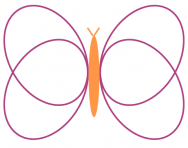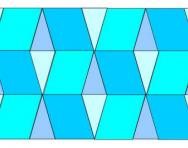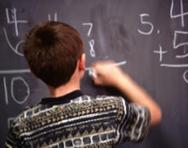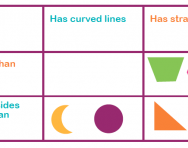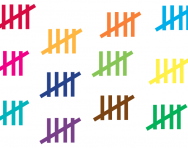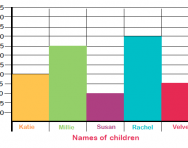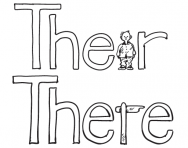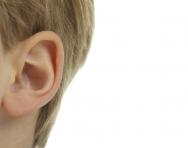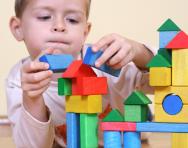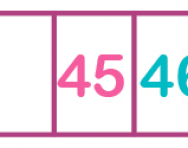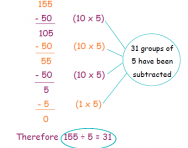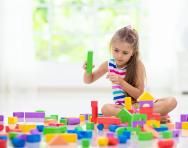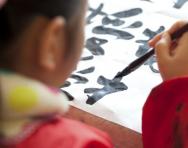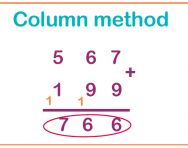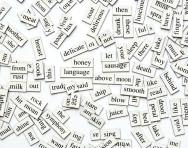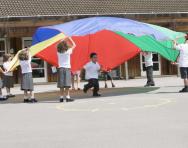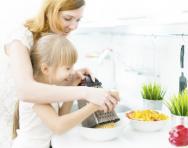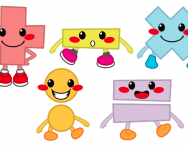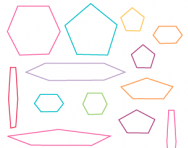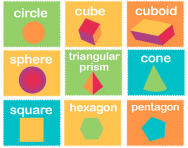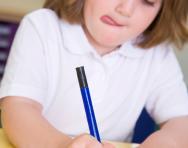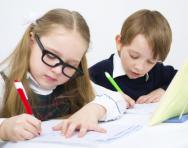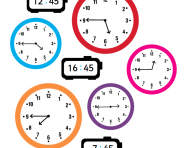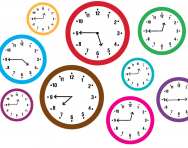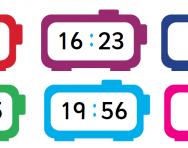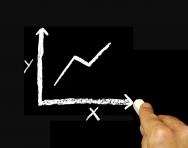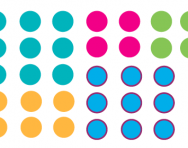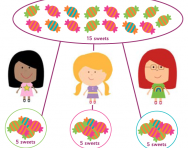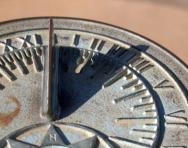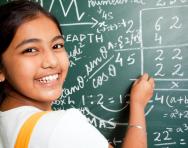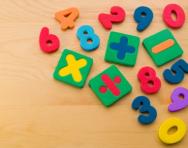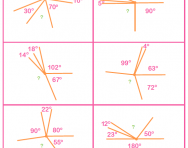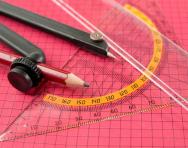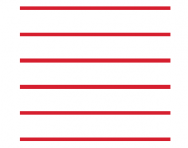Ks1 articles
What is symmetry?
We explain what symmetry is and how primary-school children are taught to find the line of symmetry and draw lines of symmetry on different shapes.
What are tessellating shapes?
We explain what tessellating shapes are and why tessellation may be taught in primary school as part of learning about 2D shapes.
What is an estimate?
We explain how children are taught to make estimates to check whether their answers are correct and how this skill is applied to more difficult calculations as your child advances through primary school.
What is a Carroll diagram?
We explain what a Carroll diagram is and how primary-school children are taught to use a Carroll diagram to sort data, such as a group of objects or numbers, methodically.
What is a tally chart?
We explain what a tally chart is and how children are taught to use a tally chart to collect data and interpret data on tally charts.
What is a bar chart?
We explain what a bar chart is and how children are taught to interpret a bar chart, produce their own bar charts on grid paper and on a computer, and produce bar charts with grouped discrete data.
Memory aids for kids
Rhymes, acrostics and other mnemonics could all help your child to remember important facts, from tricky spellings to grammar rules. We asked the experts why they work so well – and for their top 10 memory aids.
Glue ear: all your questions answered
Children afflicted by glue ear can have a miserable time at school, but the nature of the condition means many parents and teachers may not even guess that a child is suffering. Moira Holden looks at the causes of glue ear and how it can be treated.
Best construction toys for kids
Want to develop your child’s problem-solving skills, understanding of physics and fine motor control (essential for handwriting)? Time to get out the building blocks! We pick eight of the best construction toy sets for budding engineers, architects and designers.
100 of the best educational toys: stocking fillers
Don't forget the stockings! These little toys and games are the perfect size to slip in, yet still offer plenty of educational opportunity. Encourage observation, curiosity, dexterity and creativity with these brilliant gifts, whatever age your child is.
What is rounding numbers?
We explain what the term 'rounding numbers' means and how children are taught to go from rounding two-digit numbers in Year 2 to rounding decimals in Years 5 and 6.
What is the bus stop method for division?
We explain what the bus stop method for division or short division is and why this is a quick and efficient method for working out division with larger numbers.
What is chunking?
We explain what chunking is and how this division technique is taught in primary school to help your child divide large numbers.
100 of the best educational toys: KS1
These games and toys consolidate early reading skills, help with simple maths calculations, boost strategic thinking and even introduce your KS1 child to engineering and geology! For literacy and numeracy fun in toy form, these are the games to try.
Primary-school Chinese: the lowdown
Learning a foreign language has been compulsory for Key Stage 2 children since 2014, and Mandarin is an option in forward-thinking schools. Lucy Dimbylow explains what you need to know about Chinese in primary schools.
What is the column method?
We explain what the column method is, how it is set out and why it is an efficient method for working out addition and subtraction.
School exclusions: everything primary-school parents need to know
Parents faced with their child being excluded from school are often very upset and confused. Moira Holden looks at the regulations that surround the exclusion process.
13 ways to make grammar fun for children
With all Year 6 children required to take a spelling, punctuation and grammar test and more emphasis on the technical side of English in the primary curriculum, we asked the experts for their top tips and practical activities to help your child engage with – and enjoy – grammar.
6 primary-school health concerns parents need to look out for
The days of colic and cradle cap may be long gone, but your primary school child is now susceptible to a different range of health issues. From tummy bugs and nits to emotional health concerns, Lucy Dimbylow looks at what you need to know to keep them safe and well.
7 life skills all primary-school children need
Not everything your child needs to get on in life can be learned in the classroom. From typing and DIY skills to cooking and lifesaving, here are seven vital skills that will stand them in good stead in the primary-school years and beyond. By Lucy Dimbylow
Philosophy in primary school: how thinking skills will benefit your child
Pondering life’s big questions could have some surprising benefits for your child. So how is philosophy taught in primary schools, and how can you encourage children to think deeper at home?
What are the four operations?
We explain what the four operations are and how children learn about addition, subtraction, multiplication and division over KS1 and KS2, working towards solving problems involving all four operations.
What are regular and irregular shapes?
We explain what regular and irregular shapes are and suggest mnemonics to help children remember how many sides different shapes have. We also have examples of the types of questions primary-school children might be asked about shapes.
What are the properties of 2D and 3D shapes?
We explain what the properties of 2D and 3D shapes are, what faces, edges and vertices are and how children will describe 2D and 3D shapes in KS1 and KS2.
What are the names of 2D and 3D shapes?
We explain what the different 2D and 3D shapes are, when primary-school children are taught to name them and sort shapes according to their properties and when they learn to identify and draw their own nets of 3D shapes.
What is expanded notation?
We explain what expanded notation means, how it is taught in primary school and how it can help children with addition and multiplication calculations.
What are mathematical investigations?
We explain what types of mathematical investigations children will carry out in primary school and give examples of complex investigations they might be asked to solve in KS2.
What are analogue and digital?
We explain what analogue and digital are and how and when children are taught to read clock faces and convert between analogue and digital times in primary school.
What are time intervals?
We explain what time intervals are and how children are taught to work out time intervals in KS1 and KS2 maths.
What are the 12-hour and 24-hour clock?
We explain how primary-school children are taught to use the 12-hour and 24-hour clock to tell the time on analogue and digital clocks, and how you can support their learning at home.
What are axes?
We explain what axes are and how your child will be taught to use axes on pictograms, bar charts and graphs.
What are arrays?
We explain what arrays are and give examples of how they can help children with their times tables learning and to explain the relationship between multiplication and division.
What is 'shared between'?
We explain what the term 'shared between' means and give examples of typical division problems your child might be set in KS1 and KS2.
What are clockwise and anti-clockwise?
We explain what clockwise and anti-clockwise means and give examples of typical exercises your primary-school child might be presented with to test their understanding of rotation.
What are equations?
We explain what equations are and how children are taught to solve equations in KS1 and KS2, as well as how the topic of algebra is introduced.
What are odd and even numbers?
We explain what odd and even numbers are and how primary-school children are taught about this concept in KS1 and then have to apply this learning in KS2.
What are degrees?
We explain what degrees are and how children are taught to use protractors to measure angles, as well as reviewing the different knowledge children acquire about angles throughout KS1 and KS2.
What are right, acute, obtuse and reflex angles?
We explain what right, acute, obtuse and reflex angles are and how children are taught about different angles through KS1 and KS2.
What is horizontal?
We explain how primary-school children are taught to recognise horizontal lines in shapes.
What is vertical?
We explain how primary-school children are taught to recognise vertical lines in shapes, and what you can to to support your child's understanding at home.
